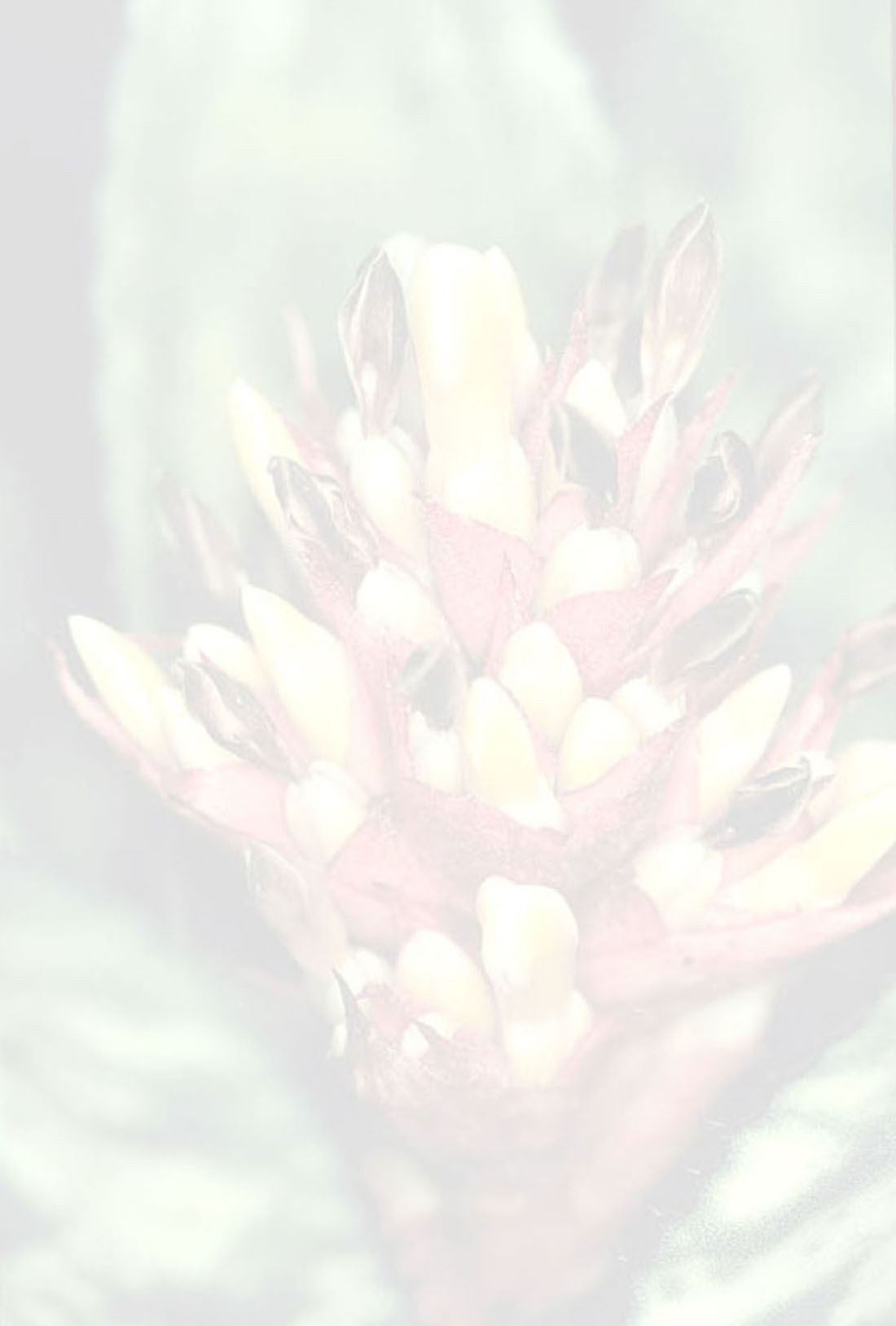

 Aechmea bicolor L.B.Sm.[as Aechmea bicolor L.B. Smith]
Aechmea bicolor L.B.Sm.[as Aechmea bicolor L.B. Smith]Observations: —Despite the fact that its sepals are distinctly connate and mucronate, A. bicolor is not related to any species of the Ortgiesia subgenus from southwestern Brazil. Its closest. relatives belong to the A. lingulata complex of species from the states of Bahia and Minas Gerais. One of them is A. burle-marxii E.Pereira from which A. bicolor differs mainly by the narrower leaves, simple inflorescence, higher connate sepals, and by the emarginate petals.
Aechmea bicolor was described over 40 years ago on the basis of a Mulford B. Foster (#2450) specimen "collected on trees in dense forest between Ituacu ("Iturassu" according to the label on the type; the correct name is Itirucu) and Jequie, State of Bahia, Brazil, altitude 480 meters". In 1979, when monographing the bromeliads, Smith & Downs stated that in fact it came from Blumenau to Itajai, Santa Catarina State, based on Foster 2514 which flowered in cultivation 1 November 1948, but was "erroneously described as Foster 2450 from Bahia, Brazil, and then corrected in a letter dated 7 August, 1958". This species was originally conceived as a member of the subgenus Ortgiesia, which supported the data of collection indicated by Smith & Downs (1979), because 11 of the 17 known species of Ortgiesia can be found in Santa Catarina State, the center of diversity for the group
After several years researching the Bromeliaceae of Santa Catarina State, Reitz ( 1983 ), who had collected with Foster during his short stay in Santa Catarina, discussed the origin of a few species that were supposed to grow in that State. Concerning A. bicolor Father Reitz stated that they did not search for plants on the road between Blumenau and Itajai. The late Brazilian bromeliad expert concluded that A. bicolor does not occur in Santa Catarina and rejected the new collection data introduced by Smith & Downs (1979).
Recently some new data sheds some light on what A. bicolor really is. In 1994, during an excursion to the County of Santa Teresinha, Bahia State, Sandra Linhares and Roberto Menescal found the true A. bicolor growing as an epiphyte in a very wet forest at an elevation of about 600 meters. The specimen collected conforms very well to the original description of the species and provides excellent evidence that the original information associated with Foster 2450 is correct.Edited from (23-03-2023): Leme 1997g. (protologue) Rediscovering Aechmea bicolor .